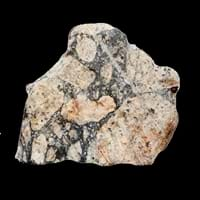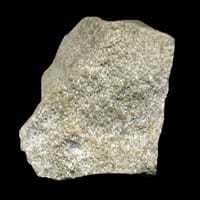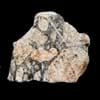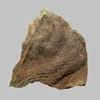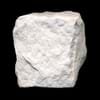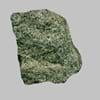Definition
Breccia is a rock consisting of angular fragments of stones which are cemented by finer calcareous material
Oolite is a sedimentary rock formed from ooids, spherical grains which are composed of concentric layers of calcite
Discoverer
Unknown
Unknown
Etymology
From Italian, literally gravel, Germanic origin and related to break
From oo- + -lite, after German Oolit. A rock consisting of fine grains of carbonate of lime
Class
Sedimentary Rocks
Sedimentary Rocks
Sub-Class
Durable Rock, Hard Rock
Durable Rock, Medium Hardness Rock
Group
Not Applicable
Volcanic
Other Categories
Coarse Grained Rock, Medium Grained Rock, Opaque Rock
Fine Grained Rock, Opaque Rock
Texture
Brecciated, Clastic
Clastic or Non-Clastic
Color
Beige, Black, Blue, Brown, Buff, Green, Grey, Orange, Pink, Purple, Red, Rust, White, Yellow
Black, Blue, Brown, Cream, Green, Grey, Pink, Red, Silver, White, Yellow
Durability
Durable
Durable
Scratch Resistant
Yes
Yes
Appearance
Layered, Banded, Veined and Shiny
Rounded and Rough
Interior Uses
Countertops, Decorative Aggregates, Entryways, Floor Tiles, Flooring, Homes, Hotels, Interior Decoration
Decorative Aggregates, Flooring, Interior Decoration
Exterior Uses
As Building Stone, As Facing Stone, Paving Stone, Garden Decoration, Office Buildings
As Building Stone, As Facing Stone, Garden Decoration, Paving Stone
Other Architectural Uses
Curbing
Not Yet Used
Construction Industry
As Dimension Stone, Construction Aggregate, Landscaping, Roadstone
Cement Manufacture, Cobblestones, Landscaping
Medical Industry
Not Yet Used
Not Yet Used
Antiquity Uses
Artifacts, Sculpture
Artifacts
Commercial Uses
Creating Artwork, Gemstone, Jewelry
Creating Artwork, Jewelry, Used in aquariums
Types
Collapse Breccia, Fault Breccia, Flow Breccia, Pyroclastic Breccia, Igneous Breccia and Impact Breccia
Not Available
Features
Available in Lots of Colors and Patterns, Clasts are smooth to touch
Available in lots of colors, Generally rough to touch, Very fine grained rock
Archaeological Significance
Monuments
Not Yet Used
Not Yet Used
Famous Monuments
Not Applicable
Not Applicable
Sculpture
Used
Not Yet Used
Famous Sculptures
Data Not Available
Not Applicable
Pictographs
Not Used
Used
Petroglyphs
Not Used
Used
Figurines
Used
Not Yet Used
Formation
Breccia is a clastic sedimentary rock which is composed of broken fragments of minerals or rock which are cemented together by a fine-grained matrix and it forms where broken, angular fragments of rock or mineral debris accumulate.
Oolites form when layers of calcite are deposited around a sand grain or fossil piece and are rolled around in calm water, which makes them round.
Mineral Content
Calcite, Clay, Feldspar, Phosphates, Quartz, Silica
Calcite, Chert, Clay, Dolomite, Quartz, Sand, Silt
Compound Content
Aluminium Oxide, Ca, NaCl, CaO, Iron(III) Oxide, Potassium Oxide, Sodium Oxide, Silicon Dioxide, Titanium Dioxide
Aluminium Oxide, Ca, NaCl, CaO, Iron(III) Oxide, FeO, MgO
Types of Metamorphism
Burial Metamorphism, Cataclastic Metamorphism
Not Applicable
Types of Weathering
Biological Weathering, Chemical Weathering, Mechanical Weathering
Biological Weathering, Chemical Weathering, Mechanical Weathering
Types of Erosion
Chemical Erosion
Chemical Erosion, Coastal Erosion
Grain Size
Medium to Coarse Grained
Fine Grained
Fracture
Uneven
Conchoidal
Porosity
Less Porous
Less Porous
Luster
Dull to Pearly
Pearly to Shiny
Cleavage
Non-Existent
Non-Existent
Toughness
Not Available
1
Specific Gravity
2.86-2.87
Not Available
Transparency
Opaque
Opaque
Density
0 g/cm3
Not Available
Resistance
Heat Resistant, Impact Resistant, Pressure Resistant, Wear Resistant
Heat Resistant, Wear Resistant
Deposits in Eastern Continents
Asia
China, India, Kazakhstan, Mongolia, Russia, South Korea, Uzbekistan
Brunei, India, Indonesia, Malaysia, Singapore, Thailand, Vietnam
Africa
Namibia, Nigeria, South Africa
Cameroon, Chad, Ghana, Kenya, Malawi, Sudan, Tanzania, Togo, Zambia, Zimbabwe
Europe
Austria, Denmark, Germany, Great Britain, Netherlands, Norway, Poland, Sweden, Switzerland, United Kingdom
United Kingdom
Others
Greenland
Not Yet Found
Deposits in Western Continents
North America
Barbados, Canada, Mexico, Panama, USA
USA
South America
Brazil
Colombia
Deposits in Oceania Continent
Australia
New South Wales, New Zealand
Adelaide, New Zealand, Queensland, Tonga, Victoria, Yorke Peninsula
Breccia vs Oolite Characteristics
Though some rocks look identical, they have certain characteristics which distinguish them from others. Characteristics of rocks include texture, appearance, color, fracture, streak, hardness etc. Breccia vs Oolite characteristics assist us to distinguish and recognize rocks. Also you can check about Properties of Breccia and Properties of Oolite. Learn more about Breccia vs Oolite in the next section. The interior uses of Breccia include Countertops, Decorative aggregates, Entryways, Floor tiles, Flooring, Homes, Hotels and Interior decoration whereas the interior uses of Oolite include Decorative aggregates, Flooring and Interior decoration. Due to some exceptional properties of Breccia and Oolite, they have various applications in construction industry. The uses of Breccia in construction industry include As dimension stone, Construction aggregate, Landscaping, Roadstone and that of Oolite include Cement manufacture, Cobblestones, Landscaping.
More about Breccia and Oolite
Here you can know more about Breccia and Oolite. The life cycle of a rock consists of formation of rock, composition of rock and transformation of rock. The composition of Breccia and Oolite consists of mineral content and compound content. The mineral content of Breccia includes Calcite, Clay, Feldspar, Phosphates, Quartz, Silica and mineral content of Oolite includes Calcite, Chert, Clay, Dolomite, Quartz, Sand, Silt. You can also check out the list of all Sedimentary Rocks. When we have to compare Breccia vs Oolite, the texture, color and appearance plays an important role in determining the type of rock. Breccia is available in beige, black, blue, brown, buff, green, grey, orange, pink, purple, red, rust, white, yellow colors whereas, Oolite is available in black, blue, brown, cream, green, grey, pink, red, silver, white, yellow colors. Appearance of Breccia is Layered, Banded, Veined and Shiny and that of Oolite is Rounded and Rough. Properties of rock is another aspect for Breccia vs Oolite. The hardness of Breccia is 7 and that of Oolite is 3-4. The types of Breccia are Collapse Breccia, Fault Breccia, Flow Breccia, Pyroclastic Breccia, Igneous Breccia and Impact Breccia whereas types of Oolite are Not Available. Streak of rock is the color of powder produced when it is dragged across an unweathered surface. The streak of Breccia and Oolite is white. The specific heat capacity of Breccia is Not Available and that of Oolite is Not Available. Depending on the properties like hardness, toughness, specific heat capacity, porosity etc., rocks are resistant to heat, wear, impact, etc.Breccia is heat resistant, impact resistant, pressure resistant, wear resistant whereas Oolite is heat resistant, wear resistant.
